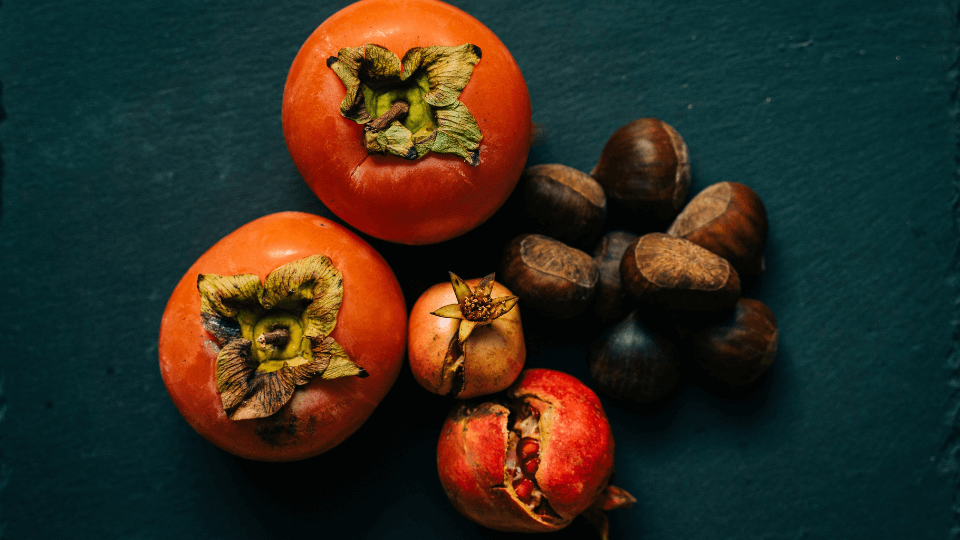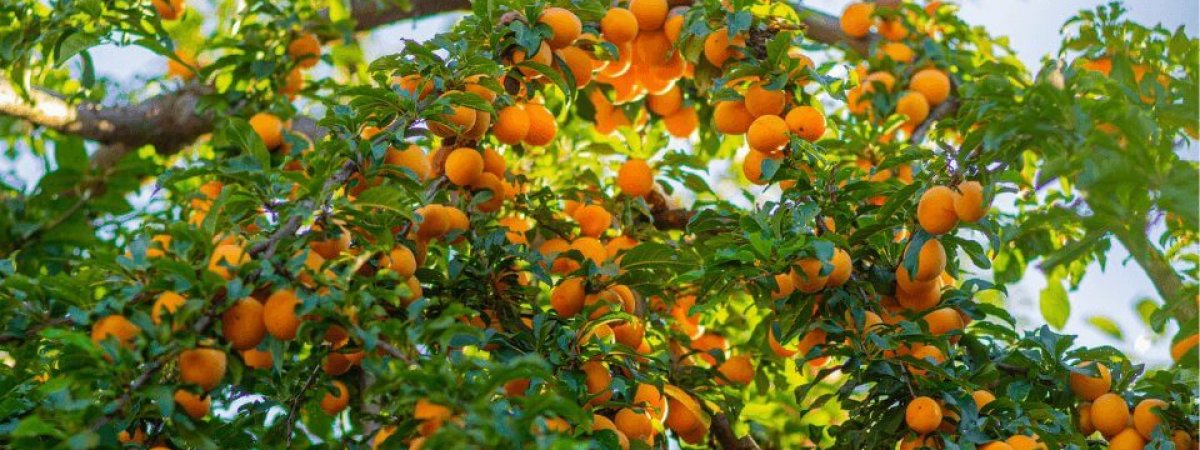A persimmon tree is a deciduous tree grown for its edible fruit and beautiful foliage. The tree is popular among gardeners for its red leaves in autumn and wood density.
It has got all the significant things for the best autumn growth, such as the red leaves dropping off to give a view of the web of black branches with bright orange fruits.
The name persimmon finds its origin in the Native American word ‘putchamin’ that means dried fruit. You will come to know about hundreds of varieties of the two most crucial types of persimmon tree – Astringent and Non-astringent.
Also called common persimmon tree in the United States, Diospyros Virginia is an astringent type of the tree. It becomes tricker for the fruit to ripen but is the best type chose for cooking. The non-astringent or Fuyu persimmons are best eaten raw and fresh.

How to grow persimmon tree?
To grow a persimmon tree, you need to start by choosing the most suitable location in your garden. We will talk about choosing the best site for growing persimmons before going to the process of growing the tree.
Best location for growing persimmons
Here are a few things to keep in mind while choosing the right location to grow persimmon tree:
- Plant under full sun for them to thrive
- Plant persimmons in well-drained, loamy, compost-rich soil
- Choose a place that allows the tree to grow until maturity
- Keep in mind the type, height, and spread of the persimmon tree you wish to grow in your garden or backyard
Note: Typically, persimmons have a long taproot that grows deep, so loamy soil would be the best choice of soil. However, Asian persimmons thrive better in sandy-loamy soil, whereas American persimmons are a type that can get along well in a wide range of soils.
Suitable growing conditions for growing persimmon tree
Apart from the soil conditions, there are various other factors responsible for the good growth of the persimmon tree.
Light
As in the case of most fruit trees, persimmons grow best in bright, direct sunlight. On some days, shade is fine for them to deal with, but you should be careful of shifting last patterns with the changing seasons. Keep in mind that persimmons usually ripen in late autumn.
Water
Once your persimmon is established well in its location, it should not be watered more frequently, except during extremely dry season or drought conditions. During the dry season, water it once weekly, deeply at the roots.
After planting or transplanting the tree, the fruit tree demands regular watering.
Temperature and humidity
American persimmons are best grown in zone 4 and can also stand in extreme winter conditions and temperature up to -25 degrees Fahrenheit. They enjoy good air circulation, but make sure not to grow persimmon trees in a location where they can get vulnerable to harsh winter winds.
The fruit trees can manage warm temperature well up to zone 9. You should not grow them in desert climates as they won’t fruit in such humidity conditions. However, persimmons grow best in areas suitable for deciduous trees to proliferate – moderate humid conditions.
Fertilizer
Though persimmons like rich loamy soil, they do not feel much happy with additional fertilizer. In case your garden soil is not very rich, you can add some favourable soil amendments while planting your persimmon for a healthy start.

Growing persimmons
You should plant bare-root persimmons in the spring season before it breaks dormancy. For planting container-grown persimmon trees, the right time is from spring to autumn. You should ignore planting persimmons in hot and dry season. Read on to know how to grow persimmons.
In this blog, we will discuss growing persimmons from seed. There are various not-so-popular ways of growing the fruit, such as by cuttings and grafting.
- Choose a completely ripe and unblemished persimmon.
- Remove the seeds and let them soak for three days in warm water.
- After three days, rinse the seeds under running water to remove flesh, if any.
- Now, start the cold stratification process by wrapping the seeds in a wet paper towel (moistened) and keep in a glass jar.
- Store it in the refrigerator for around three months.
- Keep sprinkling some water on the paper towel when it starts drying out.
- Post the cold stratification process, plant a seed in a tall, plastic container having drainage holes.
- Plant the seed 2 inches deep in the sterile potting soil
- Keep it in a bright location with a minimum temperature of 70 degrees Fahrenheit.
- You will see seedlings growing in six to eight weeks.
- Place the seedlings in bright, indirect sunlight, and make sure the soil is moist.
- Soon after the danger of frost is over, move the potted fruit seedling to a shady area outdoors.
- Harden them off in two weeks by gradually moving them to an area having stronger sunlight.
- Water weekly to ensure the soil moist.
Note:
- Tall containers are important because persimmons grow long taproot very fast.
- Plant multiple seeds to increase your chances of having a seedling successfully because persimmon seeds have a germination rate of 25-35%.
- Persimmons don’t like soggy conditions – make sure to keep the topmost layer of soil dry between watering.
Planting persimmons
- Dig a deep hole to transplant the persimmon tree carefully.
- Prepare the planting site in your garden.
- Choose an area with full sun that is sheltered from prevailing wind or breeze.
- The hole should be twice as wide as the tree’s roots.
- You should have enough space allocated for the tree’s mature growth.
- Remember to spread a layer of organic mulch around the base of the soil
- When grown from seeds, persimmon trees take three to five years to bear fruit.
Container growing persimmons
As aforesaid, you can grow persimmons in large containers. Here’s how:
- Take a container with a width and depth of 18 inches.
- Plant the tree in an organic potting mix.
- Keep the soil moist across ends but not wet.
- Feed the container-grown persimmons with an all-purpose fertilizer that is high (slightly) in potassium.
- Repot the tree every two years in another container that has a width and depth of 24 inches.
Note:
- Be careful while transplanting a persimmon without injuring the taproot.
- You can also train persimmons as espaliers.
- It is crucial to prune container-grown persimmons to keep the size small.
Pruning and training persimmons
- Persimmons are trained best as a central leader or modified central leader.
- Leave 6-8 eight scaffold branches spread evenly in the trunk
- Its branches may be brittle so they develop a tree having strong crotches that are able to take the weight of fruit.
- The fruit is borne on the prevailing season wood. The branches grow fruits same as the year they are grown.
- Ensure keeping the trees thinned out with optimum spacing of the fruit-producing branches.
- Cut off excess growth and the poorly positioned or dead wood, and also the suckers.
- In case your persimmon tree grows too tall, it may become difficult to pick fruits.
- Cut back the tall branches; you will see new shoots growing right below the point where the limb was cut.
- The right time to prune the persimmon tree is during the winter season (when it has a dormant sap).
- Heavy fruiting may break the branches. So, pick the ones that appear crowded.
- Persimmons can be trained to espaliers or cordons.
Spacing persimmon trees and its yield
- You must space persimmon trees 20-35ft apart based on the variety you choose to grow. You should also allow enough area between the trees for proper air circulation and sunlight.
- Asian persimmon trees bear one to two bushels of fruit every year, whereas American persimmon trees bear two to three bushels of fruit every year

Harvesting and storing persimmon
- Persimmon trees start bearing fruit 2-3 years after planting. Some of the grafted trees may bear fruit in one year of planting.
- Most persimmon fruits are not edible until they turn soft.
- When growing astringent persimmons, you can pick them as they turn soft – the skin becomes almost translucent.
- Alternatively, astringent persimmons may fall to the ground on turning soft.
- American persimmons drop the fruits on ripening. So, mulch the base of the tree.
- You can leave astringent fruits on the tree to ripen well when they don’t fall.
- Pick non-astringent cultivars when they are slightly firm and fully colored.
- Harvest the ready persimmons by clipping them from the tree using a sharp shear or pruner.
- Slightly underripe fruits will even ripen after picking. You can fasten the ripening process by keeping the fruits in a bag with an apple.
- You can eat persimmons fresh, or freeze or dry the fruit to eat like dates and figs.
- Fresh persimmons can be kept for up to two months in the fridge.
- Pulped persimmons can be used for pies, puddings, ice cream, and cookies.
Persimmon problems and solution
Persimmon twig girdler: A horned beetle that feeds on stems and branches to an extent that it severs the wood. The pests can be controlled by picking and the debris should be dumped in the trash. The debris contains insect eggs.
Scale: Insects that suck sap from branches and leaves. Use dormant oil spray during winter or crush the tiny insects with your fingers.
Anthracnose: A fungal disease that results in brown or gray spots on the leaves. It also infects the fruit and develops translucent spot on them, rotting them eventually. You will have to remove and dump infected fruits and leaves.
Raccoons: They steal persimmon fruits. Place a thin collar around the truck (one foot wide) to keep them away from the tree.
Conclusion
Now that you know how to grow persimmon trees, you can get fresh fruit or seedling from the nursery to plant your own! Let us know how was the experience in the comment section.
You may also like to read
How to Grow Blueberries – A Complete Guide
How to Grow Pineapples? See the Tropical Fruit Growing at Your Home!






